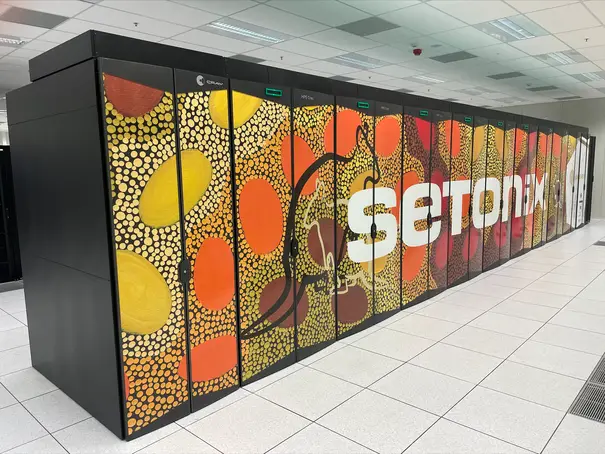QuEra and Pawsey Partner to Drive Innovation in Quantum Computing And Supercomputing

Insider Brief
- QuEra Computing and Australia’s Pawsey Supercomputing will partner to drive quantum technology innovation.
- They are collaborating on the joint development of quantum emulation software optimized for Pawsey’s Setonix supercomputer.
- QuEra will also provide Pawsey with private cloud access to QuEra’s neutral-atom-based quantum computers.
- Image: Pawsey Supercomputing Research Centre’s Setonix supercomputer
PRESS RELEASE — QuEra Computing, the global leader in neutral-atom quantum computing, and Pawsey Supercomputing Research Centre announced a partnership to drive advancements in quantum technology and enhance the capabilities of both organizations. Teams from QuEra and Pawsey are already collaborating on research projects focused on quantum science and technology that will contribute to scientific and commercial innovation across industries, including national labs.
Under the partnership, QuEra and Pawsey are collaborating on the joint development of high-performance quantum emulation software optimized to harness the full potential of Pawsey’s Setonix supercomputer, the most powerful research computer in the Southern Hemisphere and the world’s fourth greenest supercomputer as ranked in the TOP500 and Green500 lists. Drawing upon Pawsey’s extensive expertise in high-performance computing (HPC) research and QuEra’s proficiency in quantum emulation and simulation, the partnership will provide both organizations with cutting-edge, tailored tools to significantly accelerate their research capabilities and to pursue national government-sponsored projects in the quantum computing field.
QuEra will also provide Pawsey with private cloud access to QuEra’s neutral-atom-based quantum computers, hosted at QuEra headquarters in Boston. This access includes quantum machine time, expert consulting services, and specialized training, further facilitating collaborative research and innovation.
QuEra’s Aquila-class quantum computers are 256-qubit devices featuring a unique combination of system size, coherence, and an innovative analog quantum processing mode. Analog mode offers new ways to tackle machine learning, optimization, and simulation problems. Additionally, the Aquila machines benefit from QuEra’s FPQA technology (Field-Programmable Qubit Array), allowing for the flexible reconfiguration of qubit positioning, akin to designing a new chip layout for each computation. Complementing the hardware, QuEra offers Bloqade
technology (Field-Programmable Qubit Array), allowing for the flexible reconfiguration of qubit positioning, akin to designing a new chip layout for each computation. Complementing the hardware, QuEra offers Bloqade , an open-source software package in Python and Julia. This package assists in expressing and testing problems in this novel computing paradigm. Since November 2022, QuEra’s quantum computers have been available for public use on a large public cloud service and remain the only neutral-atom platform that is publicly accessible.
, an open-source software package in Python and Julia. This package assists in expressing and testing problems in this novel computing paradigm. Since November 2022, QuEra’s quantum computers have been available for public use on a large public cloud service and remain the only neutral-atom platform that is publicly accessible.
“We look forward to working with QuEra on the development of education and training programs and joint software solutions aimed at facilitating the integration of quantum and classical workloads as well as simplifying access to integrated HPC-quantum computing resources,” said Ugo Varetto, Chief Technology Officer at the Pawsey Supercomputing Centre. “Together with researchers at national and international institutions, we plan to exploit the ability of QuEra systems to support analog and digital operations to apply quantum computing to a wide range of domains ranging from combinatorial optimization to quantum chemistry simulations, radio astronomy and AI.”
“This partnership with Pawsey Supercomputing Research Centre marks a significant step in integrating high-performance computing with quantum technology. By leveraging Pawsey’s supercomputing capabilities and QuEra’s expertise in neutral-atom quantum computing, we aim to create powerful tools that enhance our research and development efforts,” said Yuval Boger, Chief Marketing Officer at QuEra. “This collaboration is about practical, focused innovation, where the synergy between supercomputing and quantum computing can lead to more efficient solutions and accelerated discoveries in the field.”
